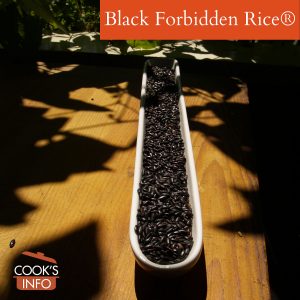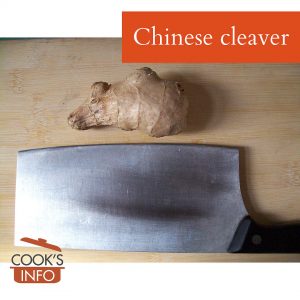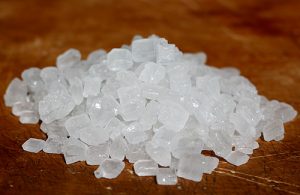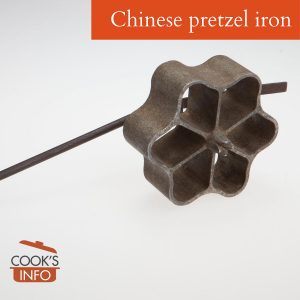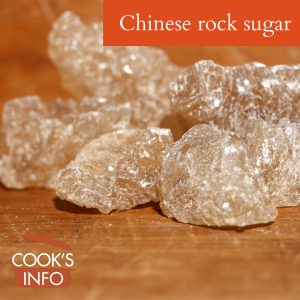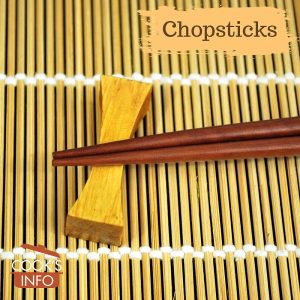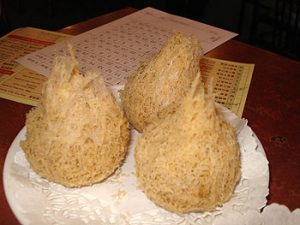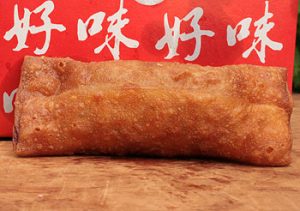Amomum Seeds have a warm, pungent taste. They are gathered in the fall, and dried in the sun. Then for use, they are gently stir-fried until brown, then the husk is removed, and the seed broken is into pieces for use. Their prime importance appears to be their use in Chinese folk medicine. Language Notes…
Chinese Food
Apricot Kernel Powder
Apricot Kernels are removed from their shells, blanched to remove their peels, and then dried and ground into a whitish powder. Sold in Chinese markets. Apricot Kernel Paste The powder can be made into “Apricot Kernel Paste”, which is like Almond Paste. In making the paste, sugar and starches such as potato starch and cornstarch…
Bean Starch Sheets
Bean Starch Sheets are made from Mung Bean Flour. The flour is wet, rolled out into thin, round sheets and put on bamboo mats to dry. They look a bit like flour tortillas, though they are very brittle. They are sold in packages. Cooking Tips To use, soak in hot water for 20 to 30…
Black Bean Sauce
Black Bean Sauce is a sort of condiment, but one used as an ingredient in cooking, rather than one that you would splodge on your plate. Black soybeans are allowed to ferment and then salted. Sometimes a rice wine vinegar and flavourings such as garlic or ginger are added. The resultant sauce has a pungent,…
Black Forbidden Rice
Black forbidden rice® is a short grain rice. The husk is grey outside; the inside grain is white. The rice appears to be black owing to high amounts of melanin in the bran. It turns purple when cooked by boiling (steaming retains the colour better.) The name “Black forbidden rice®” is actually a modern trademarked…
Bok Choy Sum
Bok Choy Sum is closely related to Bok Choy, but its stems are narrower, the leaves are more oval than broad-spoon shaped, and it produces small yellow flowers. Looking at it reminds you of Rapini (which it is milder than.) There is a slightly bitter tang to the stalks and leaves, and an almost sweet…
Cantonese Pressed Duck
Cantonese pressed duck is a Chinese duck dish. To make it, a duck carcass is seasoned and steamed, then deboned, then flattened out to about ¾ inch (1.9 cm) thick, then steamed again, then deep fried just before serving. The meat is either served hot and sliced with a sauce, or cold and shredded on…
Chengdu Garlic
Chengdu Garlic has a full but not sharp flavour. The garlic belongs to the Turban sub-group of the Artichoke group of garlics, itself a subgroup of softneck garlics. History Notes Chengdu Garlic was brought back from Chengdu market in China by a G. Czarnecki.
Chinese Cabbage
Chinese Cabbage, Chinese Broccoli and Chinese Mustard are vague terms that were no doubt coined with the best of intentions. They were probably originally meant to describe particular variants of Bok Choy, but then one term meant for one variant got applied to seven others, and it’s all such a muddle now that the terms…
Chinese Cleaver
While a Western cleaver is used primarily for meat, a Chinese cleaver is used primarily for vegetables.
Chinese Food
Cooking hasn’t been codified into an art or a noble activity in China, the way it became in France. Restaurants might become well-known known, but there is still no equivalent of a “Michelin Star” system in China, Hong Kong or Taiwan, and there hasn’t been a system of “celebrity chefs.” In fact, a respect for…
Chinese Long Bean
Chinese Long Beans grow on a climbing plant that will grow anywhere from 2.7 to 3.7 metres ( 9 to 12 feet.) It puts out large flowers that are yellow or violet coloured, depending on the variety. Once the flowers have finished and the beans start growing, the beans will be ready to pick in…
Chinese Lump Sugar
Chinese Lump Sugar © Denzil Green Chinese Lump Sugar is lumps of crystallized, refined sugar made from sugar cane. It is opaque lumps of sugar, made in different sizes. The colour can be white or yellow; the yellow is referred to in English as Yellow Lump Sugar. The sugar has a clear sugar taste, with…
Chinese Pretzel Iron
A Chinese pretzel iron is a version of a rosette iron that tends to have somewhat larger patterns available and be somewhat “deeper” in its height. They can be hard to find, so most people use rosette irons instead.
Chinese Rock Sugar
Chinese rock sugar is irregular lumps of crystallized, refined sugar. It comes in opaque, gold-coloured, irregularly-shaped lumps of varying sizes that you have to whack before using. The crystals can be up to 2 ½ cm (1 inch) wide. Production To make it, sugar cane is cooked until it just starts to colour. Kwangtung Province…
Chinese White Cabbage
Chinese White Cabbage has flat, dark, dull-green leaves on white stalks that are very thick, wide and prominent at the bottom. The leaves have a slightly mustardy taste. There are many different varieties sold under many different names. Some varieties only grow about 6 inches (15 cm) tall. The better-known Bok Choy is a variety…
Chop Suey
The dish named “chop suey” comes from Toisan, a district south of Canton, in China, where it combined leftover vegetables chopped up and fried up with noodles. It was brought over to America by Chinese workers. The American addition was probably the addition of meat: the very poor in China probably would have rarely had…
Chopsticks
Chopsticks are Asian eating utensils, designed for eating food that has already been cut by a cook into bite-size pieces. Chinese ones are square sticks, with blunt tips. Japanese ones are slightly shorter, rounded, and with pointy tips.
Cloud Ear Mushrooms
Cloud Ear Mushrooms grow all over the world off of wood. They have a brown to very dark brown cap that is a dull brown underneath. If harvesting fresh, the end where it was attached to the wood will be tough and need to be trimmed away. Their taste is pretty mild and bland. They…
Deep Fried Taro Balls
Deep Fried Taro Balls © Paula Trites Deep Fried Taro Balls are balls of taro root, served particularly at Chinese New Year. Though taro root is cheap, they cost a bit at restaurants because of the work involved. To make them, you peel and shred the taro, and let the strands stand to drain. You…
Dried Lily Buds
Dried Lily Buds are buds from the hemerocallis fulva family of lilies, (not Tiger Lily.) They are picked before they open, when they are 3 to 5 inches (7 ½ to 12 ½ cm) long. If allowed to bloom, the flowers would only last one day anyway. The buds are dried. When dried but fresh,…
Dried Scallops
Dried Scallops are just that: scallops that are dried into hard, amber-coloured discs. They are obtained usually from one of two species of scallops: either “Atrina pectinata”, or “Pationopecten yessoensis.” “Atrina pectinata” (called “Kong yiu” by the Chinese) is a small, mild-tasting freshwater scallop. “Pationopecten yessoensis” (called “sin pui” by the Chinese; “hotategai” by the…
Eggroll Wrappers
Eggroll Wrappers are used to make eggrolls, a Chinese version of fried springrolls. The dough they are made from is basically an egg noodle dough, made from egg, salt, water and wheat flour. Commercially, they are of course made by machine. They are thicker than Rice Paper or Spring Roll Wrappers. When cooked (as they…
Eggrolls
Eggrolls © Denzil Green An Eggroll is a small, cooked roll served as a starter in Chinese food. It is made by wrapping a thin piece of dough around a filling, and deep frying it. The dough wrapper turns crunchy. They are meant to be served piping hot. The fillings inside can be vegetable, or…


